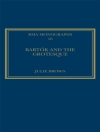Meyerbeer’s third Italian opera, Emma di Resburgo (Emma of Roxburgh) was premiered at the Teatro San Benedetto in Venice on 26 June 1819 only three months after Semiramide had appeared at Turin, and scored a success that far surpassed that of both of its predecessors. It was indeed the work that established Meyerbeer’s reputation in Italy, and extended it even beyond the Alps into Germany. It was also the opera that brought him into close contact with Rossini, the most important figure of the second decade of the century, whose work was a major influence on all his contemporaries, Meyerbeer included. Rossini’s Eduardo e Cristina was given on 24 April and Emma on 26 June. Both operas triumphed, and the two composers became very good friends, a relationship that was to continue later in Paris. Meyerbeer’s opera went on to be staged in Venice, Milan, Genoa, Florence and Padua. Translated into German, it was given in Vienna, Dresden, Frankfurt, Berlin and Stuttgart, and even reached Warsaw in 1821. The story of Emma di Resburgo concerns dynastic rivalry in Lowland Scotland at the time of the Norman conquest; its libretto was the third written for Meyerbeer by Gaetano Rossi. The text covers the same material as that of one of Mehul’s operas Helena (1803). Mayr had also set this plot as Elena as recently as 1814, as an opera-semiseria, re-adapted for La Scala in the autumn of 1816, where Meyerbeer may well have heard it. The action of Emma, transferred from Provence to Scotland, takes place in the Castle of Tura and in Glasgow, and predates by three months Rossini’s Walter Scott opera, La donna del lago (Naples, San Carlo, 24 September 1819), which is set in the Scottish Highlands. With its focus on a wild and violent Scotland, and with its themes of kidnap and usurpation, disguise and impersonation, lost relationships and restored fortunes, condemnation and rescue, Emma makes its own contribution to Italian Romantic opera. Meyerbeer’s fluent and beautiful appropriation of the Rossinian idiom is given a further dimension by the composer’s technical mastery and richness of invention, particularly evident in relation to the treatment of the Romantic subject. The new musical colours, appearing here even before similar developments in Rossini’s La donna del lago, are not used in the depiction of nature, but in the realistic situational transposition of the drama. This is particularly forward-looking in the big tableaux: the Chorus of Judges, rightly admired in its day, through-composed as an integral part of the action, and the graduated act 1 finale, dramatic in its contrasts. The sombre Death March in the act 2 finale, with its writing for the bassoons, looks forward to Meyerbeer’s French operas. The lieto fine, or happy ending of the opera, looking back to the eighteenth century, is still infused with the old ideals of the Enlightenment, typified in the clemency shown in the end by the tyrant. However, Meyerbeer had learned to infuse this Utopian spirit, so characteristic of a past epoch, with the vibrant new sensibility so characteristic of Romanticism. Emma di Resburgo marked a milestone in Meyerbeer’s career and brought him the greatest honour any composer could aspire to in Italy-a commission from La Scala Milan that would result in his next work, Margherita d’Anjou (1820).
Robert Ignatius Letellier
Emma di Resburgo [PDF ebook]
Melodramma eroico in due atti; Poesia di Gaetano Rossi Musica di Giacomo Meyerbeer
Emma di Resburgo [PDF ebook]
Melodramma eroico in due atti; Poesia di Gaetano Rossi Musica di Giacomo Meyerbeer
购买此电子书可免费获赠一本!
格式 PDF ● 网页 200 ● ISBN 9781443801010 ● 出版者 Cambridge Scholars Publishing ● 发布时间 2008 ● 下载 6 时 ● 货币 EUR ● ID 2597694 ● 复制保护 Adobe DRM
需要具备DRM功能的电子书阅读器












